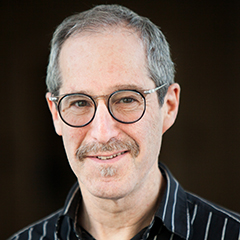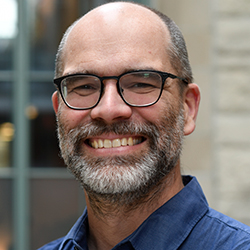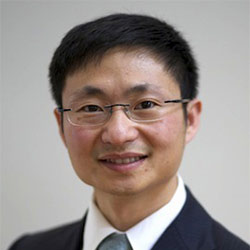Changing How the Radio Spectrum is Managed
Professors Michael Honig, Randall Berry, and Dongning Guo are part of a multi-institutional initiative to transform the landscape of spectrum research, education, collaboration, and management as demands on commercial wireless networks grow
Three Northwestern Engineering faculty members from the Department of Electrical and Computer Engineering are participating in SpectrumX, a newly funded 30-organization National Science Foundation (NSF) Center to change management of the radio spectrum.

Though the Center is led by the University of Notre Dame, Michael Honig, professor of electrical and computer engineering, is serving as the Center Research Director. Randall Berry, chair of the electrical and computer engineering department and John A. Dever Professor of Electrical and Computer Engineering, and Dongning Guo, professor of electrical and computer engineering, are also participating in multiple Center projects. The Northwestern team has a strong record of research aimed at addressing these problems that will be ideally suited to the Center.
The goal of the Center is to address concerns about the radio spectrum and transform the landscape of spectrum research, education, collaboration, and management as demands on commercial wireless networks grow. The Center has received $25 million in funding from the NSF as part of its Spectrum Innovation Initiative.
Competition for access to the electromagnetic spectrum among commercial, government, and scientific use has intensified over the past several decades largely due to advances in wireless networking and broadband access.

“This has created the need at a national level to develop technologies that enable more efficient use of this natural resource, in particular, spectrum sharing among different applications together with policies that facilitate the transition of the spectrum to more effective uses,” Honig said.
Since wireless services were introduced in the late 1920s and 30s, much of the radio spectrum has been managed via a so-called "Command and Control" strategy in which regulatory agencies, such as the FCC in the United States, determine particular allocations across stakeholders and in many cases restrict use to certain applications. The result has been a complicated patchwork of assignments that have been slow to react to advances in technologies that can lead to more effective use of spectrum, for example, by facilitating more efficient sharing across commercial, defense, and scientific applications.
“A key theme in the research program that is meant to address this problem is the development of more flexible access rights that enable stakeholders to engage in various types of trades – for example, loaning spectrum at particular times and locations to a commercial service in exchange for equipment upgrades that can mitigate interference,” Honig said.

A major goal of SpectrumX is to serve as a trusted academic hub in which all radio spectrum stakeholders can collaborate and contribute to maximizing the benefits provided by access to different parts of the spectrum. On the technical side, this will include developing efficient sharing mechanisms across commercial, government, and scientific applications that leverage advances in sensing, scientific measurements, processing of large data sets, and machine learning.
On the policy side, this must be combined with more flexible access rights and markets that align incentives for developing technologies with social objectives. These research goals will be integrated with educational goals to introduce topics related to spectrum science and policy in curricula at many different levels, and expand and deepen the existing workforce for spectrum-related activities.
“This is inherently an interdisciplinary effort that requires expertise across several domains including wireless communications and networking, sensing, radio-astronomy, earth sciences, and economics and policy,” Honig said.
